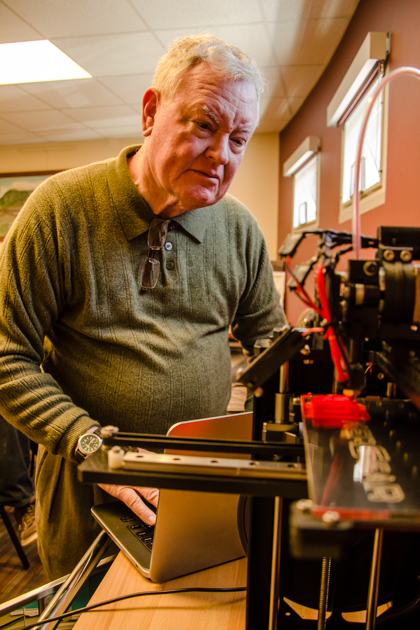3D printing is on the verge of becoming one of the most marketable and innovative technologies of this generation. Not only has it revolutionized printing as a personal commodity, but also gained momentum in the medical industry for its accurate printing procedures.
The Ignacio Community Library recently set up a 3D printer thanks to the help of Bruce Clark, Ron Schermacher, and Lucas Gass. For a while, the trio was in the market for a unit that would demonstrate the basics of 3D printing. It wasn’t until November when the group found a quality printer at a reduced price.
“The [printing] market is still continuing to grow 30% of the year,” Bruce Clark said. “This machine is a lower edge model, but the ideas of what to make with it keep coming together.”
The printer works by encoding a scanned image into the system’s memory. The schematics of practically any object can be scanned into the printer, which allows it to print the appropriate dimensions of the object. The printer then etches the prototype from memory using polyactic acid (PLA); biodegradable thermoplastic aliphatic polyester derived from renewable resources, and has the second highest consumption volume of any bioplastic in the world. The printing process can take a matter of minutes to even hours, depending on the object dimensions.
“When we were looking to purchase a printer, we found a group that was giving away a number of them,” Ron Schermacher said. “We applied to be apart of that group, but then we ended up making a decision on the exact unit we wanted. We decided to get a kit because it was cheaper, and we were able to understand it more by putting it together ourselves.”
“The industries that use these machines are huge, it’s amazing what they are capable of doing,” added Clark.
For the past couple of years, 3D printing has taken over the reigns in providing life-saving practices in medicine. Medical experts have shown a great deal of support for 3D printing as the technology allows specialists to reconstruct prototypes of patients’ limbs, cells, and even body organs.
According to Clark, this is only scratching the surface of true 3D printing technology.
“All of these printers have entered the world of creating things,” he said. “Automotive manufacturers are even finding ways to prototype things and actually build what they need, sometimes even full cars. You can integrate metal parts to where the plastic is strong enough and still use it accordingly. Even in the medical world, researchers are growing stem cells. Presto, we just built a section of an artery. The technology is amazing.”
Clark, Schermacher, and Gass have stated they are still learning the ropes of the printer and for now want to hold off on unveiling it to the community until the time is right. Once ready, the printer will be available for the public to learn about the basics of 3D printing.
“We learn more as we print,” said Schrmacher. “The idea for it is mostly for education purposes, but it may get to the point of having the community come in and use it as a valuable resource … we want to get comfortable with it ourselves before we start educating with it. This is another tool that will get people interested in the resources that we have.”

